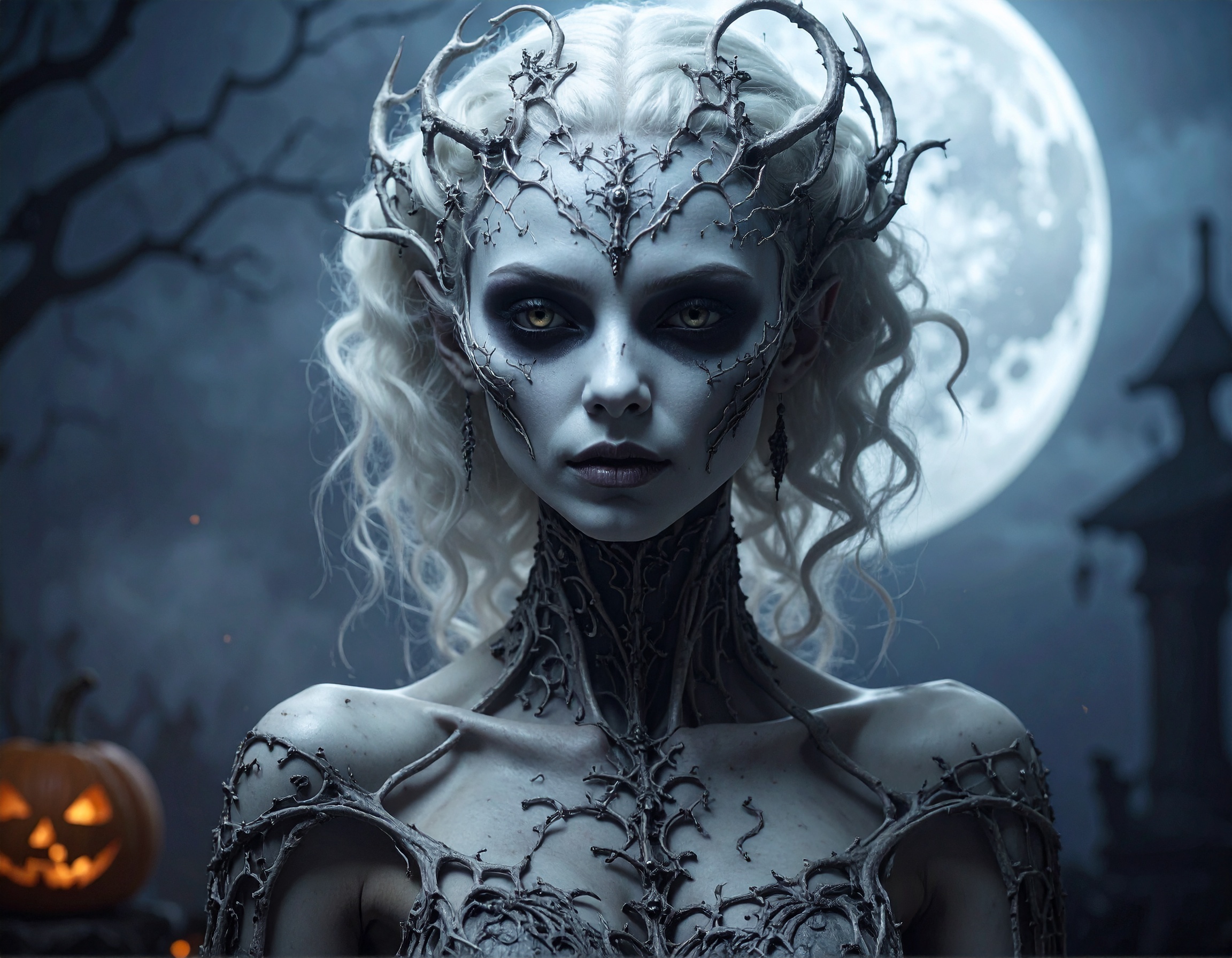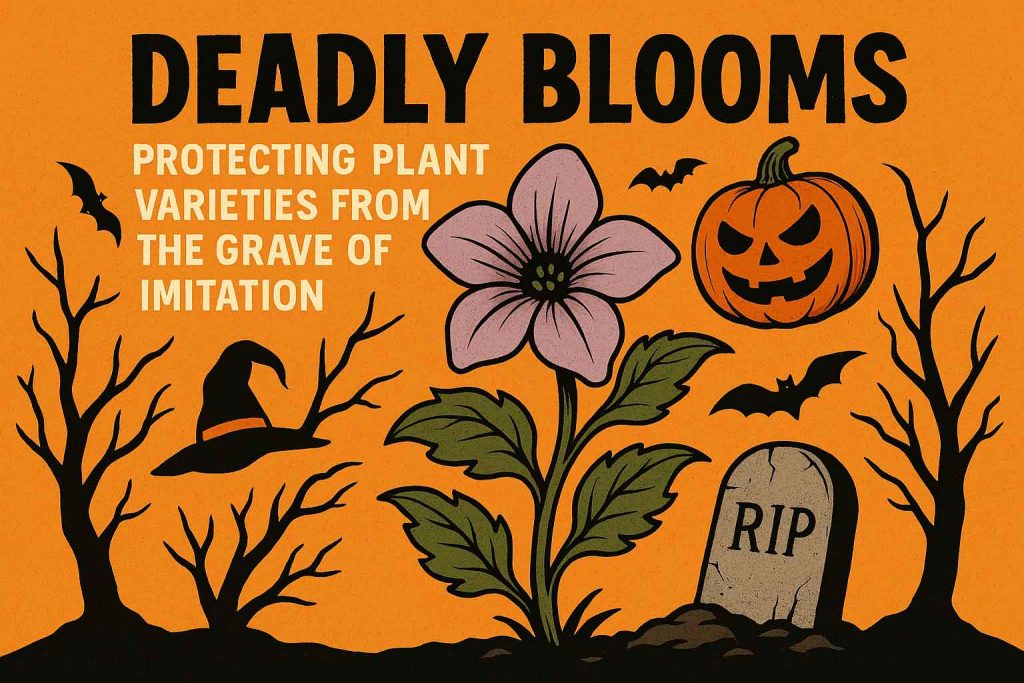The Legends of Creepy Copyright: A Short Story by our Resident Ghoul, Sam Hain

The ghoul, Sam Hain. Image created with Adobe Firefly
Happy Halloween all you ghosts and ghouls, vampires, witches and goblins! It is that time of year were pumpkins are carved, houses become haunted, and many a goblin, witch and vampire roam the streets at dusk for mischief making.
However, this is a copyright blog, and I am sure you guessed it by now, we will look at how copyright and other IP intersects with the night of Halloween.
Halloween: A short, gruesome history
Did you know that Halloween is not an American invention but rather it originated in the British Isles more than 2,000 years ago? The celebration is believed to have its origins in the festival of Samhain among the Celts. The Celts believed that the veil between the natural and supernatural world thins during the night of 31 October, and they lit large fires to ward off the evil spirits.
The word Halloween stems from All Hallows Eve and is believed to be a contraction of the later in Scottish. As the Irish and Scottish emigrated to America, they brought many of their beliefs and traditions to the New World in the 19th Century and then through American influence various Halloween customs spread to other countries in the 20th and 21st Century.

Halloween and the IP mystery
As we have seen with Easter and the ramifications of IP, there are IP consideration in Halloween as well, from inventions, to brands and design and so much more. Let’s have a look at each in turn.
Haunted inventions
Halloween is perfect for spooktacular inventions, from animatronic haunted house to pumpkin carving kits, created in the 1980s by Paul John Bardeen. There is also an invention and patent (expired) for a bleeding costume created by Alan Geller in 1998.

Spooktacular brands
We have all seen the aisles in supermarkets full of beloved Halloween themed candy, costumes, and home décor. All these can be unique to certain brands, like the LEGO® haunted house or Sanderson Sisters house. Hallmark Halloween themed cards and of course Hershey’s Peanut Butter Pumpkins. And for those not in the know, Hershey’s recently won a lawsuit brought by consumers alleging their aforementioned creepy chocolate pumpkins are not so creepy.
Creepy designs
Halloween wouldn’t be the same without its dazzling array of decorations—from eerie wall decals and ghost-shaped cake moulds to the iconic glow of intricately carved jack-o’-lanterns. These festive touches do more than set the mood—they’re also protected by industrial design rights.
In the UK, these rights help safeguard the unique visual appearance of seasonal products. That means the clever packaging on your Halloween sweets, the plush ghost toys in shop windows, or the lanterns lighting up your street can’t be copied without permission. Whether it’s a spooky silhouette or a charming character mold, design rights ensure that creators can enjoy the rewards of their originality, and that Halloween remains a celebration of imagination as much as fright.
Magically creative works
Imagine this: curled up on the sofa with some popcorn in hand, getting ready to watch horror films, followed by eerie board games about murder and mayhem and getting dressed up in fangtastic costume to receive your trick or treaters. These spine-chilling films and eerie soundtracks to Halloween-themed books and elaborate costumes, are creative works that capture the spirit of the season and are automatically protected by copyright the moment they’re created. This legal protection ensures that the original ideas behind these spooky creations remain in the hands of their creators. It gives them the right to control how their work is shared, reused, or adapted—helping Halloween-inspired creativity to flourish year after year.

© Cristina Rusu for both the image and the wreath
Deadly secrets
Halloween would not be the magical, eerie and spooktacular night it is without some of its very own deadly secrets. I mean, trade secrets! Trade secrets are important in many businesses, think about the secret Coca-Cola recipe, or the KFC spices. When it comes to Halloween, you can have special formulas for glow-in-the-dark paints, special Halloween / October themed beverages (like Pumpkin Spiced Lattes) or even proprietary software for immersive haunted house experiences. This type of IP is important as it allows companies and businesses to keep a competitive edge while protecting those magical ingredients, you know, eye of newt and toe of frog, from the prying eyes of evil warlocks (mainly competition).
Ghoulographical Indications
You know that moment you crave something sweet but from a distinctively ghoulish region? How about some cioccolato di Modica, to start the day of, enjoying some Westfälischer Pumpernickel (Westphalian Pumpernickel) to your homemade pumpkin soup for lunch and ending with some good old Bayrisch Blockmalz (hard candy from malt extract) for an invigorating sweet treat before having some Cornish Pasties for tea. Now if you are thinking I completely lost the plot, you would be only partially right. Protected Geographical Indication (PGI) are registered products which come from specific locations around the globe. Put simply, you can’t sell name your pasty a Cornish one if it is not from Cornwall. It’s a way of protecting traditional food but also the consumer, Cornish Pasty should be from Cornwall, made accordingly to Cornish recipe. Geographical, pardon me, Ghoulographical Indications, do not protect only food, certain crafts and industrial products.
Witchy plants
I am sure, many of you are aware of the Witches Chant in Macbeth:
“Eye of newt, and toe of frog,
Wool of bat, and tongue of dog,
Adder’s fork, and blind-worm’s sting,
Lizard’s leg, and owlet’s wing,— […]” William Shakespeare

However, did you know that it isn’t really an eye of newt, but mustard seed, toe of frog is buttercup, wool of bat is holly leaves, tongue of dog is houndstongue, adders fork is violet, lizard leg is ivy and owlet’s wing is garlic while blindworm’s sting is knotweed. Similarly with other plant names, bella-donna is deadly nightshade while foxglove is digitalis. We also have plants named shepard’s purse or lady’s purse, and so on. But we are straying a bit far from the point and IP protections. Certain special and new plant varieties can be protected in the EU for a period of 25 years. From ghostly vines to bewitched asparagus, certain plant varieties—like trees, flower bulb clusters, woody fruits, and ornamental shrubs—can be protected for up to 30 years, keeping their witchy secrets safe from imitation.

Image created with the help of Microsoft Copilot
The End
This is how our creepy IP story concludes. As you can see, IP protection applies to many weird and wonderful spooky things. These magical protections help creators and companies keep the Halloween spirit true and alive, making sure that each season brings with it something wickedly good.

The information contained in this blog post should be taken as recommended advice or guidance but should not be taken as legal advice. If in any doubt, please seek proper legal advice.
Open Research
Copyright, Open Access and all things Open Research